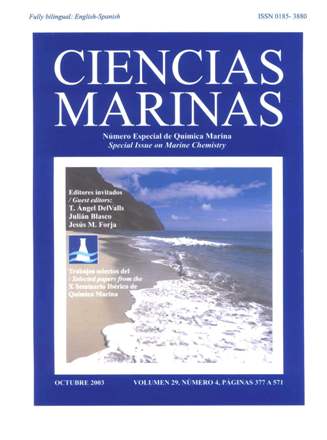Evidence for concentration of anthropogenic mercury in salt marsh sediments
Main Article Content
Abstract
Sediment cores from two salt marshes, Rosário (Tagus estuary) and Laranjo (Ria de Aveiro), were analyzed for total Hg and Al, and for Fe and Mn extracted with a hydroxylamine-acetic acid solution. Both areas have been contaminated by industrial discharges during the last decades. Vertical distributions of Hg in sediments colonized by Arthrocnemum fruticosum and Halimione portulacoides were compared to profiles in non-vegetated sediments. The same vertical distribution pattern was observed in all situations: Hg enriched in sediment layers with high root density. Mercury concentrations reached 9.3 and 29.1 nmol g–1 in Rosário, and 149.0 and 196.0 nmol g–1 in Laranjo. At both marshes, higher concentrations were found in sediments colonized by H. portulacoides. These values are one order of magnitude above the levels found in nonvegetated sediments. Mercury was enriched in sediment layers containing high concentrations of Fe extracted with a hydroxylamine-acetic acid solution, indicating the importance of Fe (and Mn) oxides formed in the rooting sediments for the retention of anthropogenic Hg.
Downloads
Article Details
This is an open access article distributed under a Creative Commons Attribution 4.0 License, which allows you to share and adapt the work, as long as you give appropriate credit to the original author(s) and the source, provide a link to the Creative Commons license, and indicate if changes were made. Figures, tables and other elements in the article are included in the article’s CC BY 4.0 license, unless otherwise indicated. The journal title is protected by copyrights and not subject to this license. Full license deed can be viewed here.

